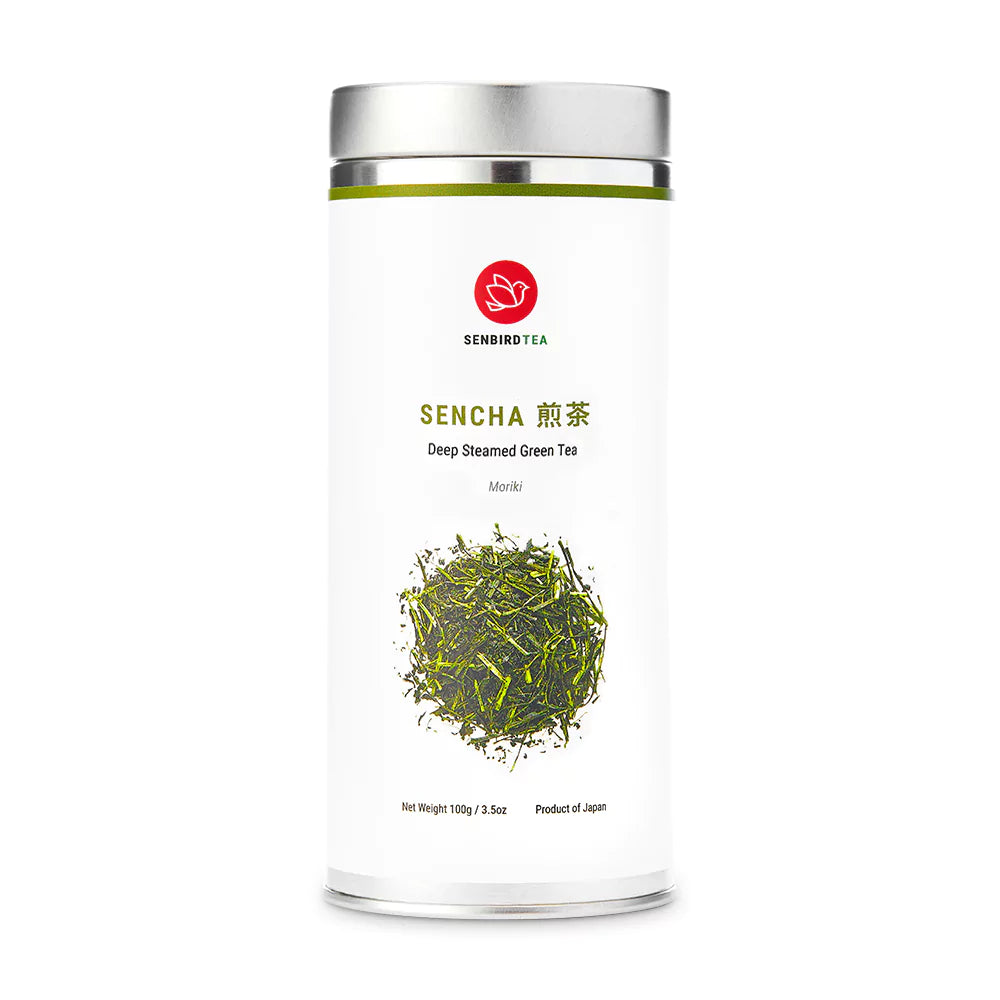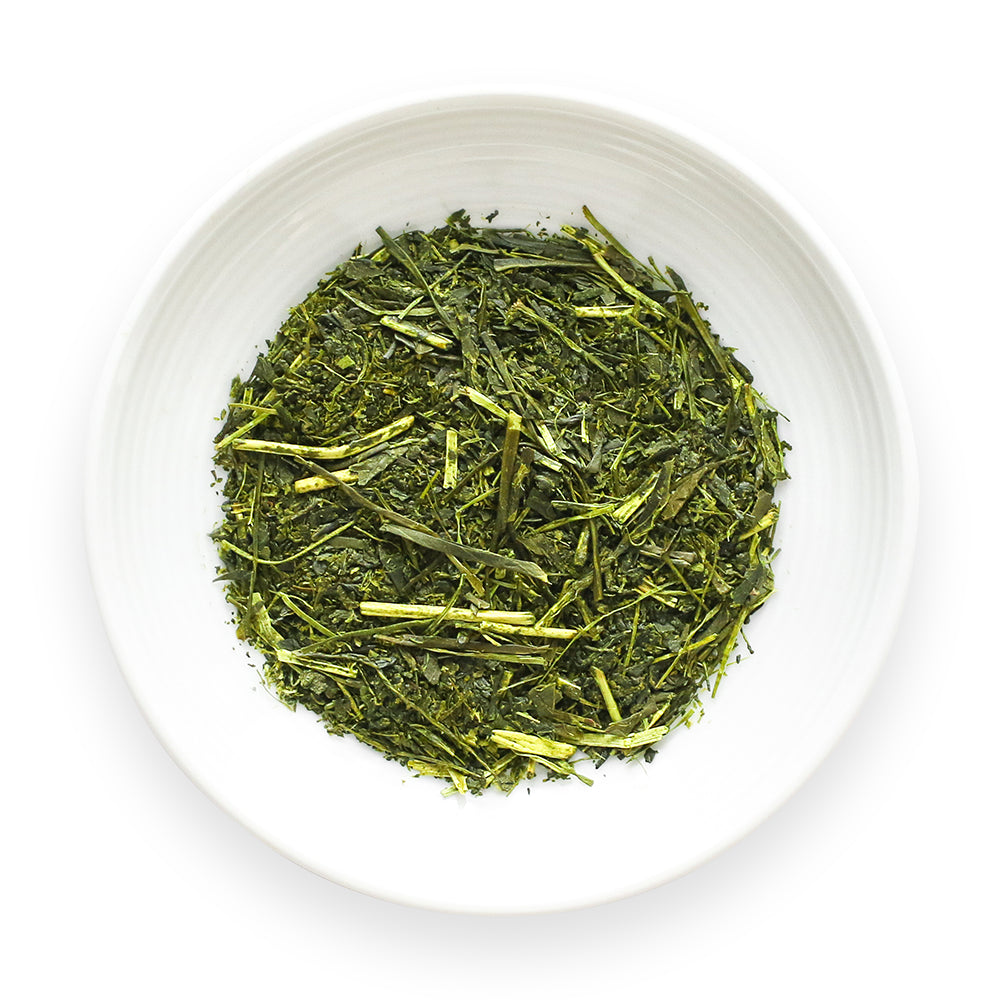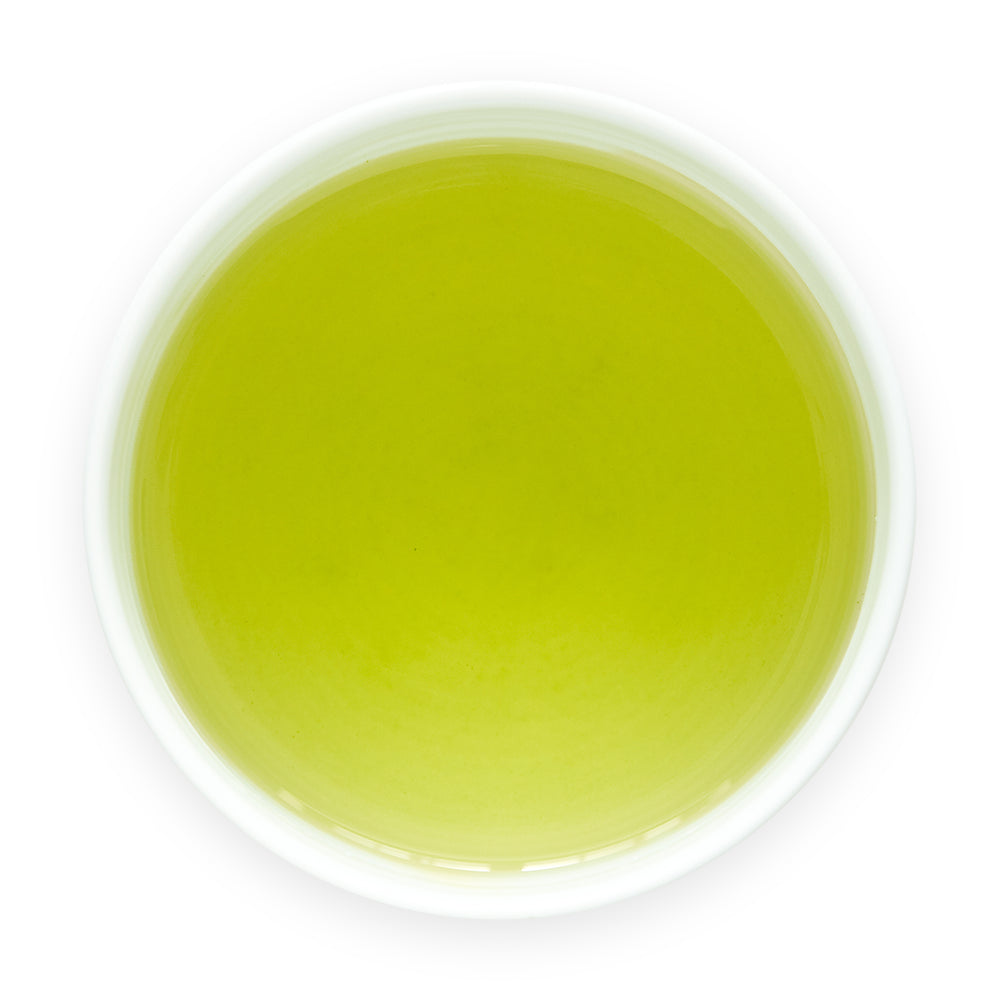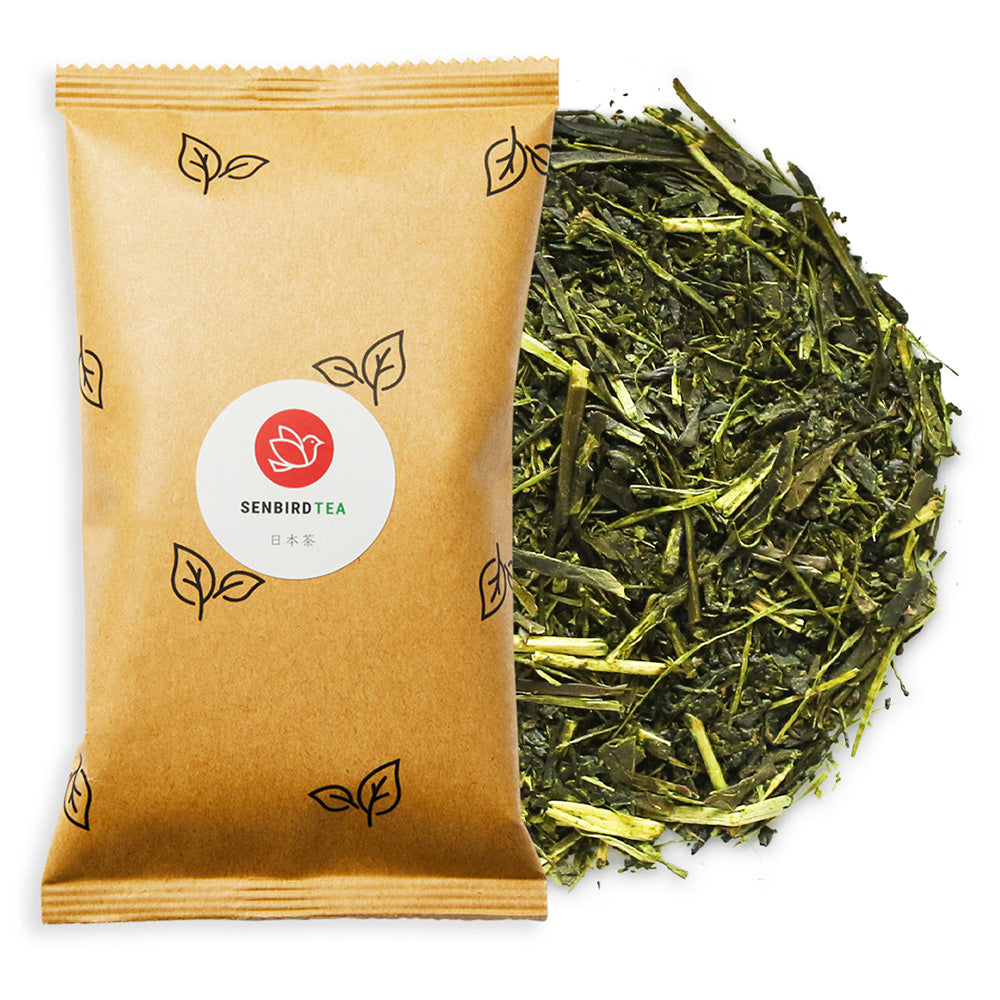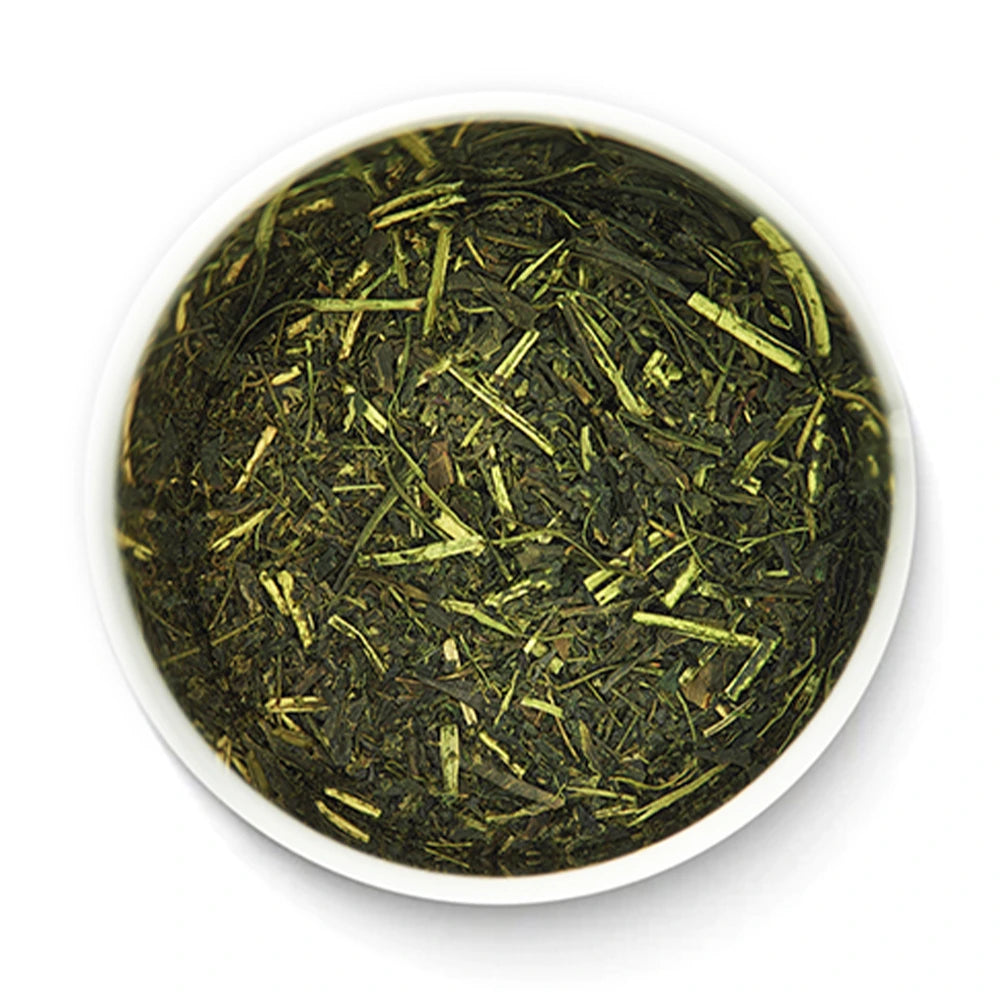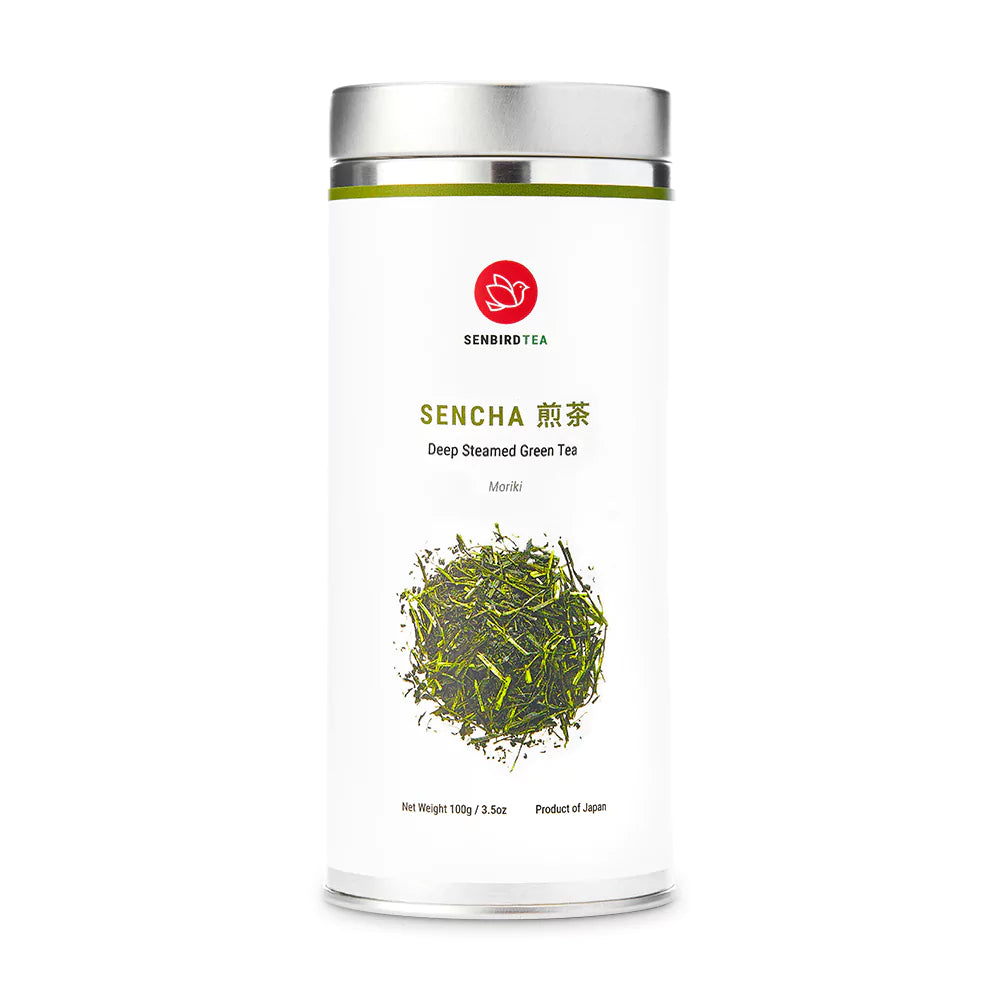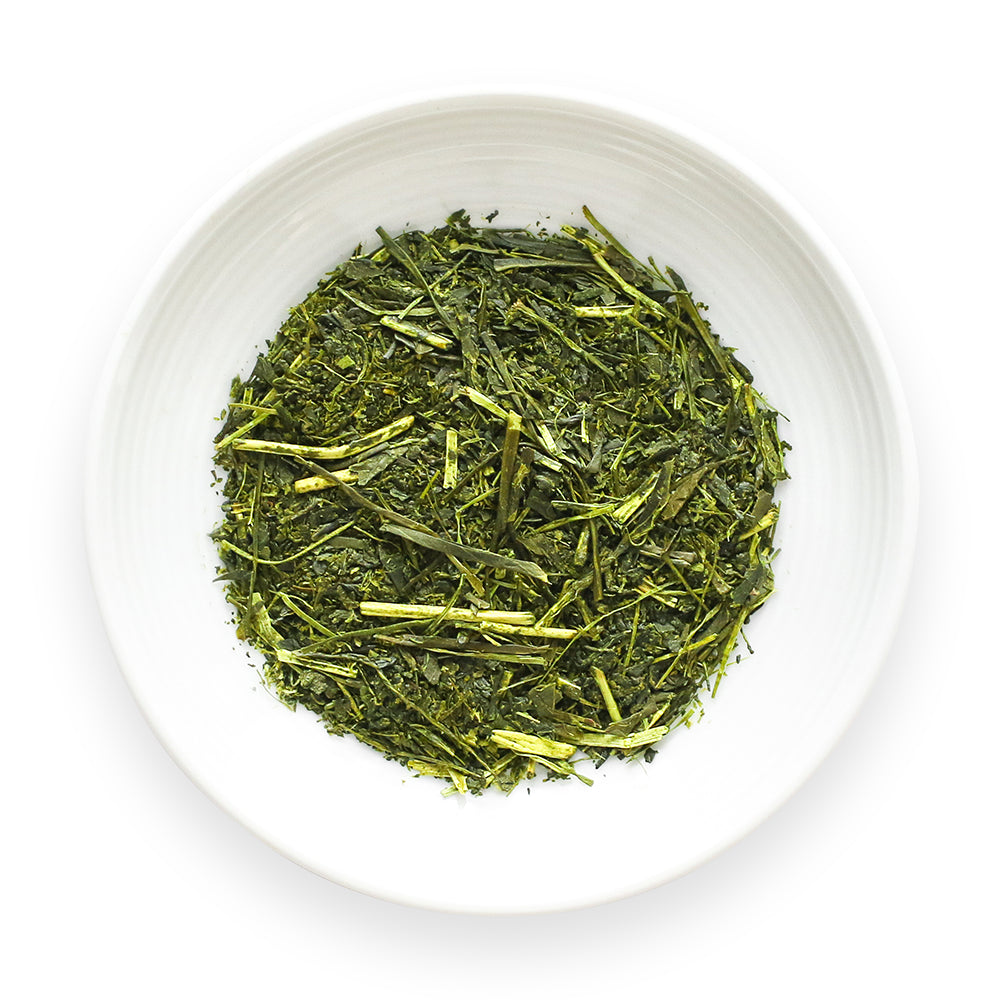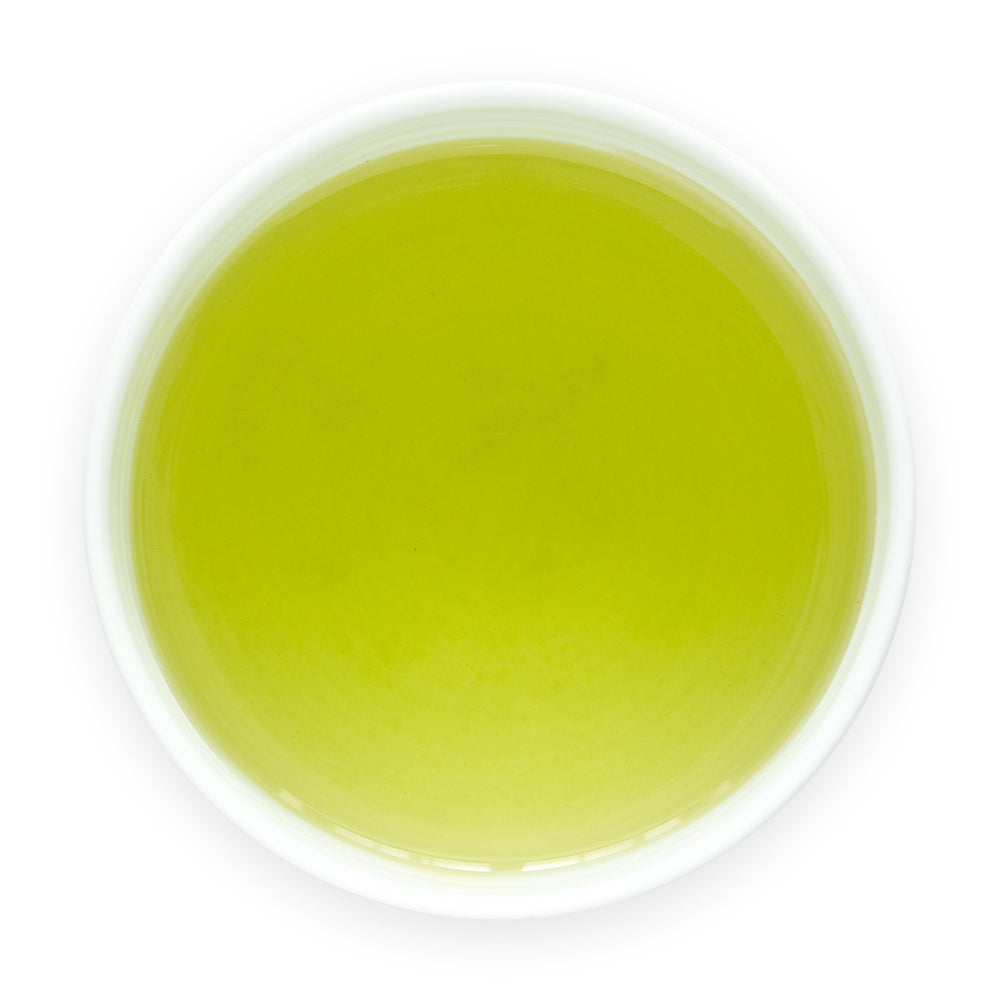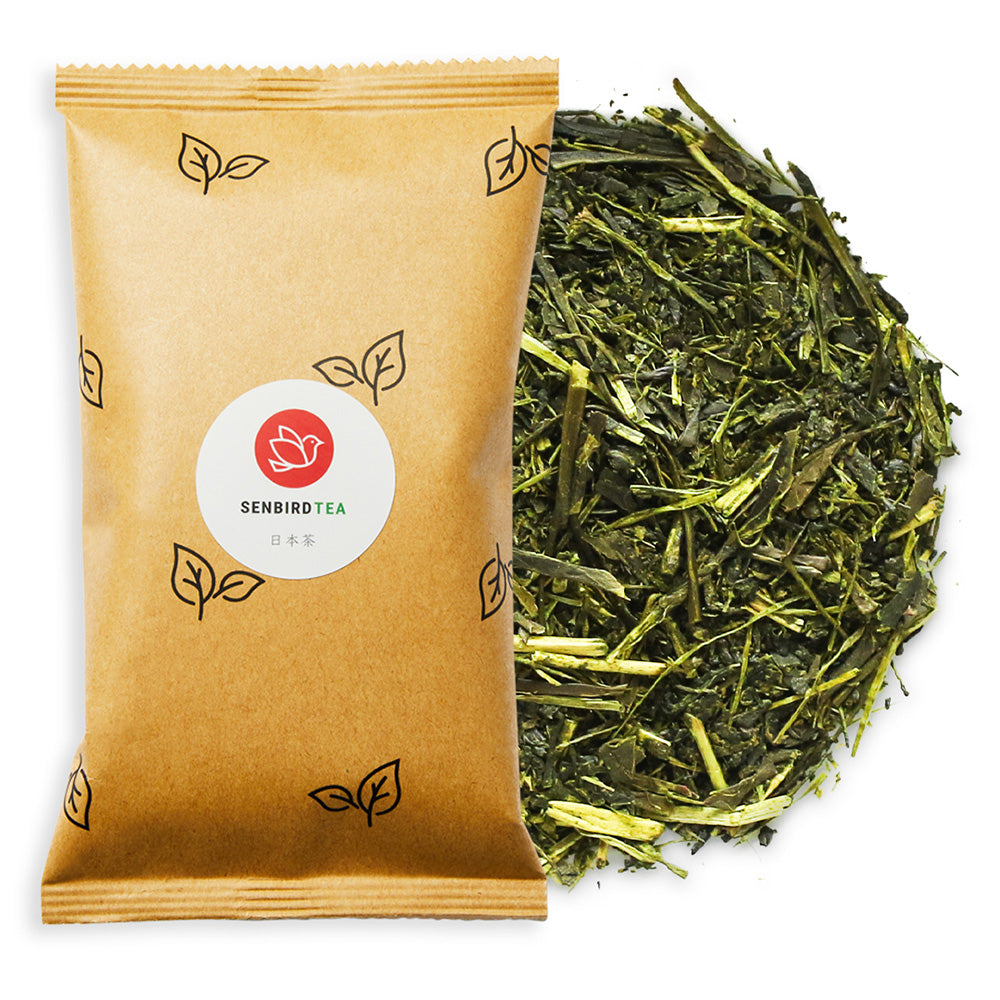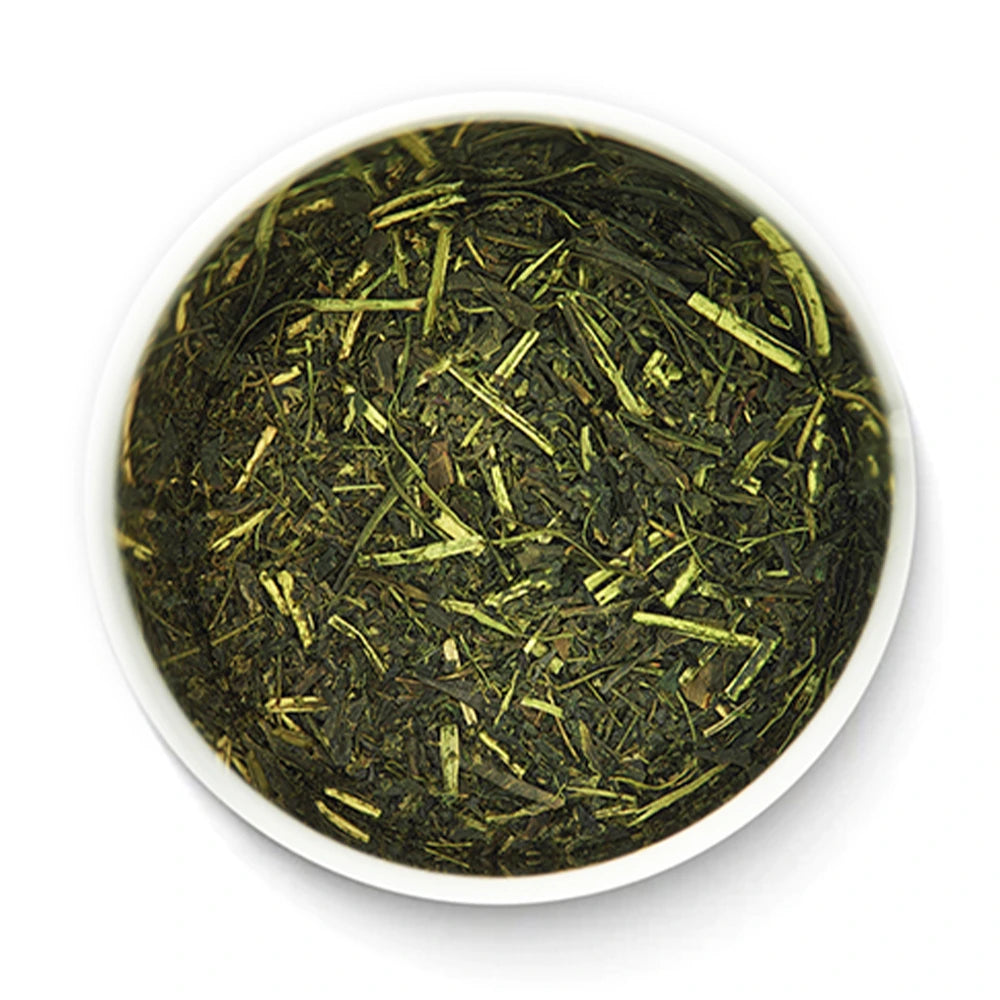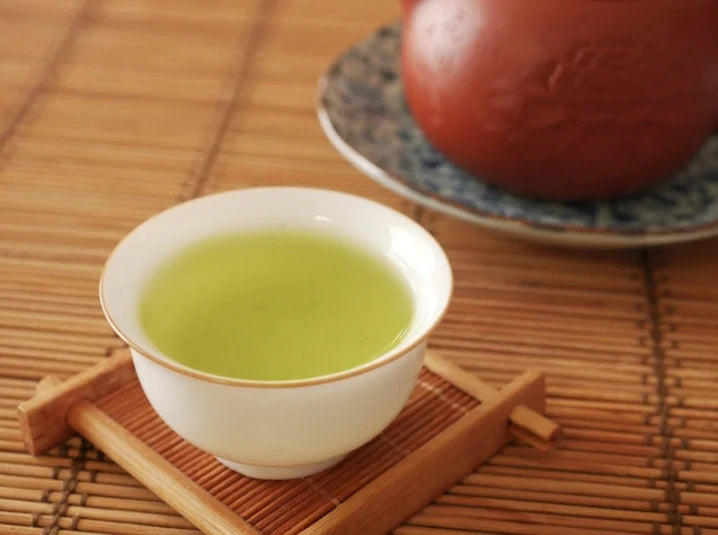
Sencha Tea vs Matcha: What's the Difference?
Green tea has long been celebrated for its numerous health benefits and unique flavors. Among the many varieties, sencha and matcha stand out as two of the most popular types of Japanese green tea enjoyed by many around the world. While they share some similarities, they also have distinct differences that make each one stand apart from each other. Let’s explore the differences between sencha tea vs matcha, and discover which cup of green tea might suit your preferences.

The Basics: What is Sencha and What is Matcha?
Sencha: Japan's Classic Green Tea
Sencha (煎茶), or green tea, is Japan’s most commonly consumed tea, representing around 80% of the country’s tea production. Commonly know as your simple, classic steamed green tea, Sencha brews a bright green-golden brew which can be enjoyed hot or cold. Similar to most teas, it is made from Camellia sinensis tea plant. Sencha is grown under direct sunlight, which contributes to its color and characteristic subtle, grassy flavor. Sencha also offers a wider range of flavor profiles depending on the harvest time and growing region. After harvesting, the leaves are steamed, rolled, and dried. This process preserves more of the tea’s natural antioxidants, amino acids, and natural compounds, resulting in a drink that is refreshing and subtly sweet.
Matcha: Powdered Green Tea
Matcha (抹茶), commonly produced in the Uji region of Kyoto, Japan, is a green tea powder made from shade-grown leaves called tencha. Tencha is a type of Japanese green tea leaf specifically used for making matcha, traditionally grown in the shade for up to 50 days during the spring. The shading process increases the chlorophyll content in the leaves, giving matcha its vibrant green color and rich nutrient profile. After being handpicked, the tencha leaves are steamed, dried, and ground into a fine powder. As a concentrated form of green tea, matcha offers higher levels of nutrients, antioxidants, caffeine, vitamins, and fiber compared to other green tea varieties. Comparing sencha tea vs matcha, you consume the entire leaf when drinking matcha, resulting in a more concentrated source of nutrients.

Flavor Profiles of Sencha vs Matcha
Sencha's Subtle and Refreshing Taste
Sencha green tea offers a wide variety of flavors, including grassy, floral, astringent, sweet, umami, and more. As a versatile tea, its taste can vary depending on region of growth, season, and preparation method. When optimally brewed however, most sencha green tea has a subtle, grassy aroma with a hint of sweetness. Its balanced and subtle profile makes it an excellent choice for daily consumption, especially during the morning or afternoon. Sencha is particularly delightful in the summer due to its refreshing and light qualities, and is an excellent choice for cold-brewing.
Matcha's Rich and Umami Flavors
Matcha has a more intense and full-bodied flavor compared to sencha. When whisked with water, it has a smooth texture with a distinct umami taste and slight bitterness, balanced by a natural sweetness.
In the West, matcha is usually categorized into two grades: culinary and ceremonial. Culinary matcha can have a wider color range and more bitterness, as it typically contains harsher parts of the tencha leaves, such as the stem. Ceremonial matcha on the other hand, is usually more expensive. Matcha powders categorized as ceremonial are particularly intriguing because they offer an additional layer of flavor profiles. Some may be more floral, while others may have a more mellow umami with a stronger sweetness – these nuances vary depending on the matcha’s production.

What are the Health Benefits of Sencha vs Matcha?
When comparing sencha tea vs matcha, both green teas are rich in antioxidants, vitamins, and minerals, making them excellent choices for those looking for a healthier, caffeinated alternative to coffee. However, the methods of preparation and consumption contribute to slightly different health benefits.
Sencha Tea: A Source of Antioxidants and Vitamins
Sencha green tea is rich in catechins, which are powerful antioxidants that support heart health, aid in weight loss, and reduce the risk of cancer. It is also an excellent source of Vitamin C, which not only boosts the immune system but is essential for collagen production, helping to maintain healthy skin, blood vessels, and connective tissues. Sencha contains more Vitamin C than any other tea, with about 1.5 times the amount found in red peppers, one of the most Vitamin C-rich vegetables. Regular consumption of sencha can significantly contribute to overall well-being and the prevention of lifestyle-related diseases.
Matcha: Nutrient-Dense and Energizing
Matcha, as a powdered tea, allows your body to easily absorb its minerals, vitamins, and antioxidants. A single serving of matcha delivers health benefits equivalent to nearly 10 cups of regular green tea. Although matcha contains less caffeine than coffee, it provides a slow, sustained release of energy, thanks to the amino acid L-Theanine, which results in long-lasting focus and a steady energy boost. Additionally, drinking matcha can help regulate digestion and prevent bloating. Compared to green and black teas, matcha contains about five times more L-Theanine, promoting relaxation. With its high concentration of antioxidants, particularly EGCG, matcha offers other health benefits, including cardiovascular disease prevention.

Recommendation Preparation of Sencha Tea vs. Matcha
Sencha Green Tea
Sencha offers its best flavor when brewed with simmered water and for a shorter time than most other green teas. Brewing sencha for too long or using water that is too hot can result in a bitter taste. After your water boils, allow some time for the water to cool a little before pouring over the sencha leaves. Steep the tea leaves in the hot water for 1-1.5 minutes. The brewing process is quick and easy, making it a convenient option for daily consumption.
When brewing sencha, we recommend taking note of the following:
- Color - Light yellowish-green
- Flavor - Fresh vegetal, aromatic, and mildly sweet
- Brew time - 45 seconds to 1 minute
- Brew Temperature – Tempered water (not boiling): 70-80 °C (158-176 °F)
- Tea Leaves Amount: 1 teaspoon per cup: three grams per 200 ml cup
Matcha Green Tea Powder
The recommended preparation of matcha may depend on whether you choose ‘culinary-grade’ or ‘ceremonial-grade’ matcha. We recommend using culinary matcha, or any matcha with a strong bitterness and yellow green color in baking and cooking recipes as its name suggests. The addition of other ingredients will help balance out the stronger bitterness, without overpowering existing umami flavors. Baked goods and desserts utilizing culinary-grade matcha are especially popular, as the added sugar pairs well with the matcha.
Ceremonial matcha, due to its finer texture and smoother taste, is ideal for traditional tea ceremonies where you can enjoy matcha with just water, or for everyday drinks such as matcha lattes. When preparing ceremonial matcha, it is recommended to use teaware tools such as a fine-mesh sifter, bamboo whisk and chawan, a traditional Japanese Matcha bowl. These tools will help enhance your process and result in a smoother, finished matcha. Additionally, there are two preparations of matcha: usucha (thin matcha) or koicha (thick matcha). Usucha uses less matcha powder and more water, and is whisked in a fast “W” motion until a rich froth is achieved. Koicha on the other hand, uses more matcha and less water, and is whisked in a gentle, circular motion until the powder is dissolved and a thicker matcha is achieved. Usucha is prepared for lattes and mixed beverages, while koicha is enjoyed in tea ceremonies or on its own. However, both are available to taste in Japanese tea rooms and tea ceremonies.

Sencha Tea vs Matcha: Which One Should You Choose?
Your choice between sencha and matcha ultimately comes down to personal taste and lifestyle. While both are suitable for everyday enjoyment, each green tea offers a different experience. Sencha is a more simple and classic steamed green tea, easily prepared with flavor profiles that are light and refreshing. Matcha on the other hand, is ideal for those looking for a sustained energy boost, or for a richer and more umami taste. Whether you enjoy the simplicity of sencha or the depth of matcha, both teas stand out for their health benefits, distinct flavor profiles, and popularity.
🍵 Did you make this recipe? Tag us on Instagram at @senbirdtea or #senbirdtea. We’d love to see your creation!
If you want to read more articles on Japanese sencha and matcha, check them out here:
- Matcha vs Coffee: Is Matcha Better Than Coffee?
- Ultimate Guide to Japanese Green Tea
- How Japanese Matcha Green Tea Powder is Made
- Cold Whisk Matcha Latte Recipe
- How to Brew the Perfect Cup of Sencha Green Tea
- 4 Health Benefits of Matcha Green Tea Powder
- Health Benefits of Sencha Japanese Green Tea
- 5 Unique Matcha Drink Recipes
- 12 Green Tea Inspired Recipes for Delicious Meals and Desserts
- Caffeine in Japanese Green Tea
- Understanding Ceremonial Matcha vs Culinary Matcha
- A Modern Guide to a Matcha Tea Ceremony at Home
Share your moment with us and stay connected on:







